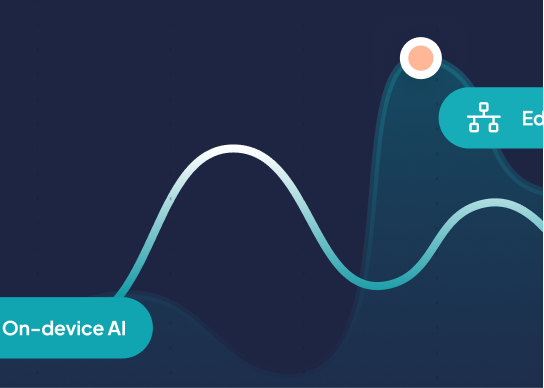Privacy Preserving AI: From Broadcasting to Broad Listening


The landscape of Artificial Intelligence is undergoing a profound transformation. This shift moves beyond mere technological advancement to embrace new paradigms of data governance, computational efficiency and ethical considerations. In recent times, there has been a pivotal move towards AI systems that prioritize privacy, unlock vast untapped data and explore revolutionary computing architectures. This transformation is about fundamentally changing how AI learns, operates and integrates into our lives.
For the past decade, the explosive progress in AI hasn’t been solely due to breakthroughs in model architectures like Transformers. The real catalyst has been the scale and organization of data. From rudimentary, disorganized datasets to the trillions of tokens used in today’s Large Language Models (LLMs), the sheer volume of information has fueled AI’s capabilities.
However, a critical bottleneck remains: the vast majority of the world’s most sensitive and valuable data – residing in healthcare, finance, personal devices and proprietary systems – is not on the public internet. This represents an enormous, untapped reservoir for AI. The future of AI hinges on establishing secure information governance infrastructure that can safely access and utilize this private data without compromising confidentiality.
The ethical and practical imperative to access private data has given rise to Privacy-Preserving AI (PPAI). This field focuses on technologies that allow AI models to learn from data without directly exposing the raw, sensitive information.
Key PPAI techniques that are becoming increasingly vital include:
The development of these technologies is an opportunity. Making privacy profitable by enabling others to build applications and derivative products from data, without ever giving them a copy of the raw data, can create new revenue streams and expand the utility of information.
With robust PPAI in place, the notion of a two-sided data marketplace becomes a tangible reality. In this future, data owners can gain “attribution-based control,” understanding and managing how their private data contributes to AI predictions. This allows for the monetization of data without its direct transfer, fundamentally altering the economics of data and AI.
The early internet lacked the necessary technological ingredients for such a marketplace. However, advancements in multi-GPU enclaves, homomorphic encryption, and differential privacy are now making this vision feasible. This technological inevitability is set to profoundly reshape the AI landscape, leading to a vibrant ecosystem where data becomes a tradable asset, controlled by its originators.
Beyond data access, the efficiency of AI models is another critical area of innovation. Current LLMs, despite their power, often exhibit “contextual sparsity” and wasted compute, necessitating massive models to avoid “collisions” and forgetfulness.
However, techniques like distillation and compression promise significant reductions in model size and inference costs – potentially increasing efficiency by six orders of magnitude. Distillation involves training a smaller “student” model to replicate the behavior of a larger “teacher” model, effectively compressing knowledge.
Perhaps the most disruptive frontier in efficiency is analog computing. Unlike digital computers that operate with discrete binary states and a clock, analog computers leverage continuous physical phenomena (like voltage or current) for calculations. This allows for instantaneous, parallel processing at the speed of light. A breakthrough in analog hardware specifically for transformer models could drastically reduce AI compute costs and pose a significant challenge to existing digital computing paradigms, offering unprecedented efficiency gains.
The current AI ecosystem often resembles “walled gardens,” particularly in the on-device AI space, where dominant platforms restrict local-first development. However, history suggests that centralization in information technology eventually gives way to federation and decentralization.
The shift where the cloud increasingly becomes an “anti-encrypted” utility as local-first infrastructure could usher in a “PC internet version of AI,” where AI capabilities are distributed and operate closer to the data source. This decentralization marks a crucial step in the evolution of information technology, moving away from restrictive “apps” towards more open and fluid data flows.
AI is a powerful communication technology. To understand this, it’s helpful to consider the concepts of broadcasting and broad listening.
Broadcasting, in the traditional sense, involves transmitting information from a single source to a wide audience. Think of radio or television broadcasts. In the context of information technology, this can be seen in how information is disseminated through centralized platforms or systems.
Broad listening, on the other hand, is a more nuanced concept. It involves the ability to process and synthesize information from a multitude of diverse sources. LLMs are already adept at scaling synthesis, thereby addressing the challenge of “information overload” by efficiently processing and distilling vast amounts of information from this “broad listening.” This capability allows AI to “listen” to a wide range of data, identify patterns, and generate insights that would be impossible for a single human to achieve.
The remaining critical challenges with broad listening are privacy and veracity. These can be solved through the harmonious integration of cryptography and distributed systems, facilitating attribution-based control and trust-based filtering of information. This “broad listening” capability of AI is envisioned to lead to profound societal transformations: perfect value alignment, an end to disinformation, the dismantling of the attention economy and surveillance capitalism, and the emergence of fully representative democracies and efficient markets.
The journey towards this future is a complex interplay of technological innovation and ethical considerations. The imperative of privacy-preserving AI, and the disruptive potential of new computing paradigms underscore a future where AI is not just intelligent, but also secure, efficient, and ultimately, a force for greater transparency and empowerment.
This blog is based on an EdgyAI Podcast with Andrew Trask from OpenMined. You can explore the work done in the OpenMined community and learn more about their efforts in moving the Privacy Preserving AI here.

We’re thrilled to introduce NimbleEdge AI, the industry’s first fully on-device conversational assistant powered by the NimbleEdge platform. With **no internet dependency**, **no cloud processing**, and **no data leaving your device**, this is the future of AI: private, secure, and always accessible—even offline.

The introduction of Large Language Models (LLMs) and Generative AI (GenAI) has been a major milestone in the field of AI. With AI models encapsulating vast amounts of world knowledge, their ability to reason and understand human language has unlocked unprecedented possibilities

The New Stack: Rethinking AI for Mobile